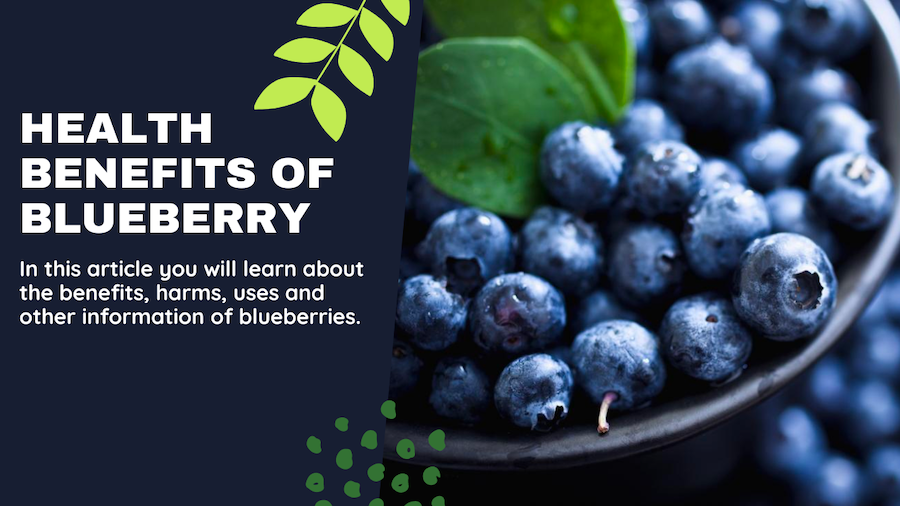Unlocking the Power of Food: Discover the Top Cholesterol-Lowering Foods for a Healthier You
 |
| 12 Delicious Foods That Lower Cholesterol Naturally // Taste |
R E A D : The Nutrient-Dense Superfood for Improved Health and Wellness
HealthNews: Eating a diet that is rich in cholesterol-lowering foods can be a powerful strategy for reducing the risk of heart disease and promoting overall health. These foods are typically high in fiber, antioxidants, healthy fats, and plant compounds that can help lower LDL (bad) cholesterol levels and improve heart health. Incorporating cholesterol-lowering foods into a balanced diet can also help promote weight management, reduce inflammation, and protect against chronic diseases such as cancer. Some common cholesterol-lowering foods include nuts, fruits and vegetables, legumes, fish, dark chocolate, olive oil, avocado, soy, green tea, spinach, and berries. By making a conscious effort to include these foods in your diet, you can reap numerous health benefits and enjoy delicious and nutritious meals and snacks.
Lowering Your Cholesterol Has Never Been So Delicious: Explore These Nutritious and Tasty Foods Today!
* These are the 12 foods that naturally lower cholesterol
> Oats
Oats are an excellent cholesterol-lowering food that can easily be incorporated into a healthy diet. They contain a soluble fiber called beta-glucan, which has been shown to help lower LDL cholesterol levels. Eating oatmeal or other whole grain cereals for breakfast, or as a snack throughout the day, can help reduce the risk of heart disease. Oats are also a good source of vitamins and minerals, such as manganese, phosphorus, and magnesium, which are important for maintaining overall health. Additionally, they are versatile and can be combined with other cholesterol-lowering foods such as nuts, fruits, and soy milk to create a delicious and nutritious meal.
> Nuts
Nuts are a great cholesterol-lowering food that are rich in healthy fats, protein, and fiber. They contain unsaturated fats, which can help lower LDL cholesterol levels and reduce the risk of heart disease. Nuts are also a good source of vitamins and minerals, such as vitamin E, magnesium, and potassium. Eating a handful of nuts as a snack or adding them to a salad, trail mix, or yogurt can provide a satisfying crunch and boost the nutrient content of your meal. Some of the best nuts for lowering cholesterol levels include almonds, walnuts, and pistachios. However, it is important to remember that nuts are high in calories, so it is recommended to enjoy them in moderation as part of a balanced diet.
 |
| Delicious Foods That Lower Cholesterol Naturally Eat Your Way to a Healthier Heart // Unsplash |
> Fruits and vegetables
Fruits and vegetables are important cholesterol-lowering foods that are rich in fiber, vitamins, minerals, and antioxidants. They are low in calories and high in nutrient content, making them an essential part of a healthy diet. Fiber-rich fruits and vegetables can help lower cholesterol levels by binding to bile acids and removing them from the body. They are also a great source of antioxidants, which can help reduce inflammation and prevent damage to cells. Some of the best fruits and vegetables for lowering cholesterol levels include apples, berries, citrus fruits, cruciferous vegetables (such as broccoli and cauliflower), leafy greens (such as spinach and kale), and tomatoes. Eating a variety of colorful fruits and vegetables can not only help lower cholesterol levels, but also provide numerous health benefits and reduce the risk of chronic diseases.
> Beans and legumes
Beans and legumes are excellent cholesterol-lowering foods that are rich in protein, fiber, vitamins, and minerals. They are also low in fat and calories, making them a great addition to a healthy diet. The high fiber content in beans and legumes can help reduce LDL cholesterol levels by binding to bile acids and removing them from the body. They are also a good source of plant-based protein, which can help lower the risk of heart disease. Some of the best beans and legumes for lowering cholesterol levels include black beans, chickpeas, lentils, and kidney beans. They can be easily incorporated into a variety of dishes, such as soups, stews, salads, and dips. Adding beans and legumes to your meals can not only help lower cholesterol levels, but also provide long-lasting energy and promote satiety.
> Fish
Fish is a heart-healthy food that can help lower cholesterol levels. It is a great source of protein, omega-3 fatty acids, and other important nutrients. Omega-3 fatty acids can help reduce inflammation and lower triglyceride levels, which can help lower the risk of heart disease. Fatty fish such as salmon, mackerel, and tuna are particularly rich in omega-3 fatty acids. Eating fish twice a week can provide numerous health benefits and promote overall well being. However, it is important to choose fish that are low in mercury and other contaminants. Other healthy fish options include sardines, herring, and trout. Fish can be prepared in a variety of ways, such as grilled, baked, or broiled, making it a delicious and versatile addition to a healthy diet.
 |
| Foods That Lower Cholesterol Naturally Eat Your Way to a Healthier Heart // Times of India |
R E A D : Exploring the Versatile Remedial Properties of Apple Cider Vinegar for Improved Digestion, Skin Health, Heart Health, and More
> Dark chocolate
Dark chocolate is a delicious and satisfying cholesterol-lowering food that is rich in antioxidants and flavanols. Flavanols can help lower blood pressure and improve blood flow, which can reduce the risk of heart disease. Eating dark chocolate (at least 70% cocoa) can also help lower LDL cholesterol levels. It is important to note that while dark chocolate can provide health benefits, it should still be consumed in moderation as it is high in calories and fat. A small piece of dark chocolate as a dessert or snack can satisfy a sweet tooth while also providing health benefits. Dark chocolate can also be combined with other healthy foods such as nuts, berries, and oatmeal to create a tasty and nutritious treat.
> Olive Oil
Olive oil is a healthy fat that can help lower cholesterol levels when used in place of saturated and trans fats. It is rich in monounsaturated fatty acids, which can help raise HDL (good) cholesterol levels and lower LDL (bad) cholesterol levels. In addition, olive oil is a good source of antioxidants, which can help reduce inflammation and protect against chronic diseases such as heart disease and cancer. Extra-virgin olive oil, which is minimally processed and has a stronger flavor, is the healthiest type of olive oil as it retains the highest amount of nutrients. Olive oil can be used in a variety of ways, such as in salad dressings, marinades, and for sautéing vegetables or meats. Replacing other oils or fats with olive oil in cooking can not only add flavor to dishes, but also provide numerous health benefits.
> Avocado
Avocado is a nutritious cholesterol-lowering food that is rich in healthy fats, fiber, vitamins, and minerals. It is an excellent source of monounsaturated and polyunsaturated fats, which can help lower LDL (bad) cholesterol levels and reduce the risk of heart disease. Avocado is also a good source of fiber, which can help lower cholesterol levels by binding to bile acids and removing them from the body. Additionally, it is high in potassium, which can help lower blood pressure and promote overall heart health. Avocado can be eaten on its own or added to a variety of dishes such as salads, smoothies, and sandwiches. It can also be used as a substitute for mayonnaise or butter in recipes. However, it is important to keep portion sizes in mind as avocado is high in calories. Incorporating avocado into a healthy diet can provide numerous health benefits and add delicious flavor to meals.
> Soy
Soy is a cholesterol-lowering food that is rich in protein, fiber, vitamins, and minerals. Soy protein can help lower LDL (bad) cholesterol levels, which can reduce the risk of heart disease. Additionally, soy isoflavones, a type of plant compound found in soy, can help lower LDL cholesterol levels and improve blood vessel function. Soy is available in many forms, such as tofu, tempeh, soy milk, and edamame. Soy products can be used as a substitute for meat or dairy products in many recipes, such as stir-fries, soups, and smoothies. However, it is important to choose minimally processed soy products, as some highly processed forms may contain added sugars and preservatives. Incorporating soy into a healthy diet can provide numerous health benefits and add variety to meals.
> Green Tea
Green tea is a cholesterol-lowering food that is rich in antioxidants called catechins. Catechins can help lower LDL (bad) cholesterol levels and improve overall heart health. In addition, green tea is a good source of polyphenols, which can help reduce inflammation and protect against chronic diseases such as heart disease and cancer. Drinking green tea regularly can also help improve blood vessel function and lower blood pressure. Green tea is easy to prepare and can be consumed hot or cold. It can also be added to smoothies, baked goods, and other recipes for added flavor and health benefits. While green tea contains caffeine, it is generally lower in caffeine than coffee and can provide a mild energy boost without the jitters associated with coffee. Incorporating green tea into a healthy diet can provide numerous health benefits and promote overall well being.
> Spinach
Spinach is a cholesterol-lowering food that is packed with vitamins, minerals, and antioxidants. It is a good source of dietary fiber, which can help lower cholesterol levels by binding to bile acids and removing them from the body. Spinach is also rich in plant compounds such as lutein and zeaxanthin, which can help reduce inflammation and protect against chronic diseases such as heart disease and cancer. Additionally, it is a good source of potassium, which can help lower blood pressure and promote overall heart health. Spinach can be eaten raw in salads or cooked in a variety of dishes such as soups, stir-fries, and omelets. It can also be blended into smoothies for added nutrition. Incorporating spinach into a healthy diet can provide numerous health benefits and add delicious flavor to meals.
 |
| Delicious Foods That Lower Cholesterol Naturally // Dreamstimes |
> Berries
Berries are a cholesterol-lowering food that are rich in antioxidants, fiber, vitamins, and minerals. They are a good source of soluble fiber, which can help lower LDL (bad) cholesterol levels by binding to bile acids and removing them from the body. Berries are also high in plant compounds such as anthocyanins, which can help reduce inflammation and protect against chronic diseases such as heart disease and cancer. Additionally, they are low in calories and high in water content, making them a great snack for weight management. Berries can be eaten fresh or frozen, and are a delicious addition to smoothies, yogurt, oatmeal, and baked goods. Some examples of common berries include strawberries, blueberries, raspberries, and blackberries. Incorporating berries into a healthy diet can provide numerous health benefits and add a burst of flavor to meals and snacks.
R E A D : The Power of Pomegranate: Unlocking the Health Benefits of this Superfood
incorporating cholesterol-lowering foods into your diet is a simple yet powerful way to promote heart health, manage weight, and reduce the risk of chronic diseases. By choosing whole, nutrient-dense foods such as nuts, fruits and vegetables, legumes, fish, dark chocolate, olive oil, avocado, soy, green tea, spinach, and berries, you can enjoy a delicious and satisfying diet that provides numerous health benefits. These foods are rich in fiber, antioxidants, healthy fats, and plant compounds that can help lower LDL (bad) cholesterol levels and improve overall well being. By making these changes to your diet and adopting a healthy lifestyle, you can take control of your health and enjoy a happier, healthier life.

:max_bytes(150000):strip_icc()/blueberries_annotated2-0ab902955b674c2a9af28d94d654cd06.jpg)







